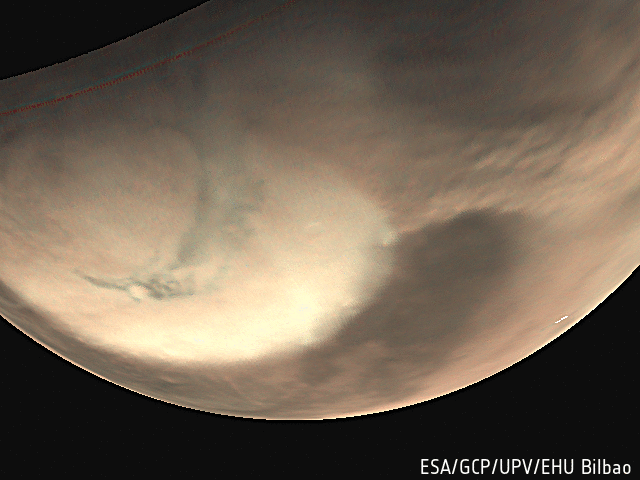By tracking the movement of cells in the sequence of images, the wind speed can be measured. Wind blows over the cloud features at speeds of up to 140 km/h, causing the shape of the cells to elongate in the direction of the wind. Despite the chaotic and dynamic atmospheres of Mars and Earth, nature creates these orderly patterns.
“When thinking of a Mars-like atmosphere on Earth, one might easily think of a dry desert or polar region. It is quite unexpected then, that through tracking the chaotic movement of dust storms, that parallels can be drawn with the processes that occur in Earth’s moist, hot, and decidedly very un-Mars-like tropical regions,” comments Colin Wilson, ESA’s Mars Express project scientist.
One key insight made possible with the VMC images is the measurement of the altitude of dust clouds. The length of the shadows they cast are measured and combined with knowledge of the Sun’s position to measure the height of the clouds above the martian surface. Results revealed that dust can reach approximately 6–11 km above the ground and the cells have typical horizontal sizes of 20–40 km.
“Despite the unpredictable behaviour of dust storms on Mars and the strong wind gusts that accompany them, we have seen that within their complexity, organised structures such as fronts and cellular convection patterns can emerge," explains Agustín Sánchez-Levaga from the Universidad del País Vasco UPV/EHU (Spain), who leads the VMC science team and is lead author of a paper presenting the new analysis.



